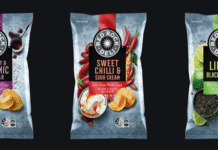The ancient art of baking has evolved from the first time that humans combined flour, water and heat to make bread. Dietary and nutritional trends, cost-saving measures and increased interest in environmentally responsible, sustainable practices all drive innovation and changes in the baking industry.
The primary drive behind innovation in the industry is to reduce costs and increase sales. By responding to customers’ changing tastes and health needs and by increasing plant efficiency and reducing costs through sustainability measures, both goals can be achieved.
Changes in formulations and ingredients
Changing consumer demands have led to changes in formulations and ingredients. To make baked products healthier, many bakers fortify their products with vitamins such as thiamine, riboflavin and niacin in addition to minerals such as iron and zinc. In recent years, Vitamin D fortifications have gained popularity. There has also been an increased interest in using ‘super-fruits’ and other natural additives to provide health benefits as well as improved quality.
Gluten-free flours
The rising popularity of gluten-free products has fueled the use of wheat-alternative flours. Until recently, persons with Celiac disease or wheat allergies or intolerances had limited (if any) choices in baked goods. Fortunately, there are newer options for bakers and consumers of baked goods, including bean, sorghum, rice, soy, potato, tapioca, amaranth, quinoa and millet flours.
Bread and other bakery products are constantly reformulated to add beneficial ingredients that increase their flavor and health-supporting properties, satisfying customers’ desires for products that are both delicious and healthful. By incorporating regionally produced ingredients, bakeries can both improve products’ flavor and lower plant operation costs, in particular transportation expenses.
Smaller portions
In addition to the popularity of reduced-fat, gluten-free and low-sodium items, product trends are shifting toward smaller portions and ‘bite-sized’ products. A number of new, highly popular, ‘snack-sized’ and calorie-portioned products have arrived on store shelves in the past few years. Pies on a stick, pie pops and pie bites have all added to an overall increase in bakery sales. Catering to consumers who enjoy baked goods but want to monitor their caloric, fat and sugar intake, smaller portions of these items not only influence consumers’ baked good choices but also offer alternatives to larger portion sizes.
Consumers are also seeking new flavor options, especially in chips and other salty snack foods. Health-conscious innovations in salt and fat reductions have led snack manufacturers to offer reduced and salt-free lines while finding creative ways to ensure that products remain flavorful through the use of other ingredients. Local and regional consumer preferences strongly influence innovations in ingredient content.
Commitment to sustainability
As a cost-saving and environmentally responsible effort, bakery operators are becoming increasingly committed to sustainability measures in their operations. Ingredient sourcing is of particular interest in terms of sustainability. Bakeries are increasingly looking toward using regionally grown and produced ingredients that not only support local producers but also reduce transportation costs.
The use of organic and seasonably available produce in baked goods is increasing, along with trends toward using environmentally friendly packaging. Moreover, bakeries are following practices to minimize waste that are both cost-effective and environmentally responsible.
Assuring food safety
Large-scale baking equipment permits food producers to automate much of their work at bakeries, thus reducing waste and producing baked products more efficiently. Innovation in equipment design (ovens, proofers, dryers and even pans) is gearing towards ease of use for equipment operators, improved safety and sanitation and energy efficiency.
High-efficiency equipment not only assists in sustainability efforts and cost-lowering efforts, but it is also beneficial in reducing food safety risks. Maintaining consistency in the baking process assists in ensuring that the finished products are produced in a sanitary environment with appropriate temperature controls and packaging methods employed in production.
Appeal to customers to generate profit
Innovations in baking are driven by industry needs to satisfy customers’ increasing desires for healthful, good-tasting products, while reducing costs and increasing profits. Changes in baked product formulation can increase sales while sustainability measures and automated equipment help cut costs and increase food safety measures. While baking is a traditional craft, modern facilities and production lines are employed to create baked products that appeal to a variety of consumers while generating a profit for the baking industry.
By: Raj Kapoor, managing director, Assocom Institute of Bakery Technology & Management (AIBTM)
IndiFoodBev — authentic, impactful and influential
An English-language food and beverage processing and packaging industry B2B platform in print and web, IndiFoodBev is in its third year of publication. It is said that the Indian food and beverage industries represent approximately US$ 900 billion in revenues which implies more than 20% of the country’s GDP. Eliminating the wastage on the farmside can help to deliver more protein to a higher number of the population apart from generating sizable exports. The savings in soil, seeds, water, fertilizer, energy and ultimately food and nutrition could be the most immense contribution that country is poised to make to the moderation of climate change.
To improve your marketing and grow sales to the food and beverage processing and packaging industry, talk to us. Our research and consulting company IppStar [www.ippstar.org] can assess your potential and addressable markets in light of the competition. We can discuss marketing, communication, and sales strategies for market entry and growth.
Suppliers and service providers with a strategy and budget for targeted marketing can discuss using our hybrid print, web, video, and social media channels to create brand recognition linked to market relevance. Our technical writers are ready to meet you and your customers for content.
The second largest producer of fruit and vegetables in the world is continuously expanding processing capacities and delivery systems with appropriate innovative technologies. We cover product and consumer trends, nutrition, processing, research, equipment and packaging from farm to thali. Get our 2025 media kit and recalibrate your role in this dynamic market. Enhance your visibility and relevance to existing markets and turn potential customers into conversations. Ask for a sample copy of our bi-monthly in print or our weekly IndiFoodBev eZine each Wednesday.
For editorial info@ippgroup.in — for advertisement ads1@ippgroup.in and for subscriptions subscription@ippgroup.in
Naresh Khanna – 10 February 2025
Subscribe Now












